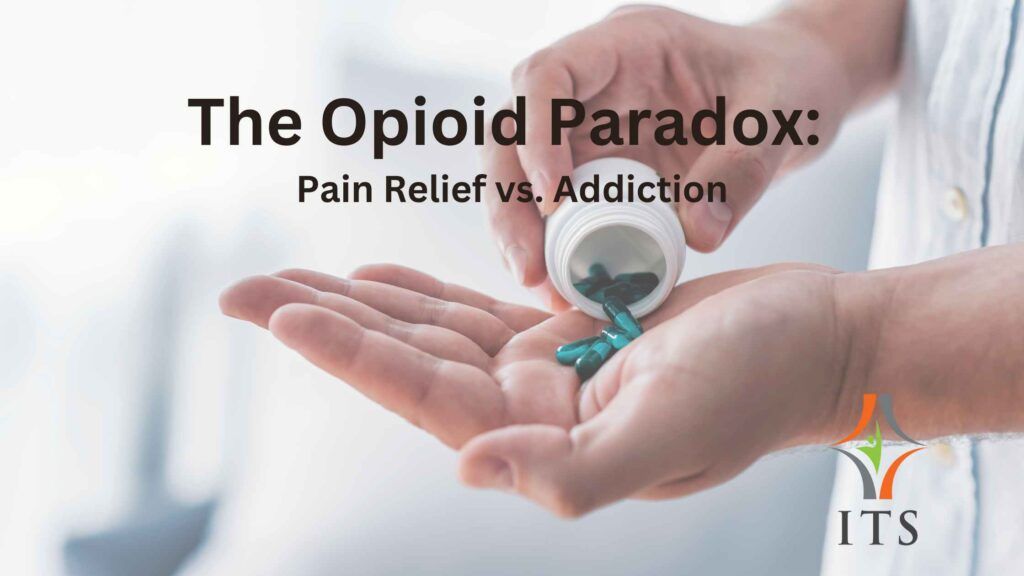In the intricate landscape of modern medicine, opioid pain relief stands as a double-edged sword. While these medications provide necessary solace for those grappling with severe or chronic pain, they also harbor the potential for misuse, dependency, and addiction. This paradox poses a significant challenge for healthcare providers and patients alike, navigating the fine line between effective pain management and the risk of developing a substance use disorder.

Understanding the Opioid Paradox
The opioid paradox encapsulates the dilemma faced by millions who seek to manage pain without falling into the abyss of addiction. Opioids, when used responsibly under medical supervision, can offer a lifeline for individuals suffering from acute post-surgical pain or chronic conditions. However, the euphoric effect produced by these drugs can lead to misuse, heralding a journey towards dependence and addiction.
The Science Behind Opioid Pain Relief
Opioids work by binding to specific receptors in the brain, spinal cord, and other areas of the body, effectively blocking pain signals sent from the body through the nervous system. This mechanism not only diminishes the sensation of pain but can also create feelings of relaxation and euphoria, contributing to their potential for misuse.
The Risk of Addiction
The likelihood of developing an addiction to opioids is influenced by several factors, including the duration of use, dosage, and personal or familial history of substance abuse. Prolonged use of opioids can lead to physical dependence, where the body adapts to the presence of the drug, necessitating higher doses to achieve the same pain-relieving effect and leading to withdrawal symptoms upon cessation.
Strategies for Balancing Pain Relief and Addiction Risk
Balancing the benefits of opioid pain relief with the risk of addiction requires a multifaceted approach, emphasizing patient education, careful prescribing practices, and the exploration of alternative pain management strategies.
Responsible Prescribing and Monitoring
Healthcare providers play a crucial role in mitigating the risk of opioid addiction. Adopting responsible prescribing practices, such as starting with the lowest effective dose for the shortest possible duration, can significantly reduce the potential for misuse. Regular monitoring and follow-up appointments enable early detection of signs of dependency, facilitating timely intervention.
Patient Education and Involvement
Educating patients about the risks associated with opioid use, including the potential for addiction, is paramount. Transparent discussions about pain management goals, expectations, and alternative therapies empower patients to make informed decisions about their treatment, fostering a collaborative approach to pain management.
Exploring Alternative Pain Management Techniques
For many, alternative and adjunctive therapies can offer effective pain relief without the risks associated with opioids. Options such as physical therapy, acupuncture, cognitive-behavioral therapy, and non-opioid medications can be tailored to meet individual needs, providing a holistic approach to pain management.
Addressing Opioid Use Disorder
Despite precautions, some individuals may develop an opioid use disorder. Recognizing the signs of addiction and seeking help promptly is critical for recovery. Medication-assisted treatment (MAT), combining FDA-approved medications with counseling and behavioral therapies, offers a comprehensive approach to treating opioid addiction, underscoring our organization’s commitment to supporting individuals on their journey to recovery.
Conclusion
The opioid paradox presents a complex challenge in the realm of pain management, balancing the need for effective pain relief with the imperative to prevent addiction. Through responsible prescribing, patient education, and the exploration of alternative therapies, we can navigate this delicate balance, ensuring that individuals suffering from pain receive the care they need while minimizing the risk of addiction. If you or someone you love is struggling with opioid pain relief or addiction, we encourage you to reach out to a healthcare provider or addiction specialist. Together, we can address the opioid paradox with compassion, understanding, and a commitment to holistic, patient-centered care.
